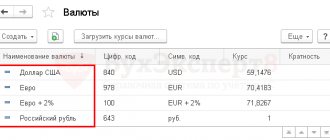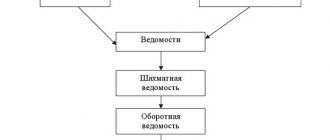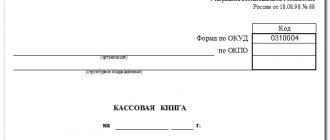» IP management
The activities of individual entrepreneurs are closely related to the acquisition of various goods from legal entities and individuals. Such sales of goods are clearly regulated by tax and civil legislation, since such transactions are subject to taxation, and this business activity must be clearly documented.
If it is easier for an individual entrepreneur to manage his paperwork, especially if he is on a simplified taxation system, then for a legal entity, all movement of his inventory must be reflected in special accounting documentation, which is constantly checked by regulatory authorities. In order to understand how goods are sold to individual entrepreneurs, this publication was written.
- 2 Document flow of legal entities that sell various goods
- 3 Sales of products in cash
- 4 Cashless payment system
- 5 Some features of payment for products
What documents does the individual entrepreneur work with?
There are many primary accounting documents. But at first, in order to correctly formalize the purchase and sale of goods, the provision of services or the performance of work, you can get by with only a few of them. In some cases, invoices will also be needed.
- Agreement. Any transaction begins with the conclusion of an agreement. It defines the basic terms of cooperation: what the entrepreneur and the client do, for what price and in what time frame. If the client is a regular one, then you can draw up one agreement for several transactions.
- An invoice for payment. In this document, the entrepreneur indicates the amount to be paid, a list of goods sold or services provided, as well as his bank details.
- Payment documents: cash receipt or sales receipt . These documents confirm payment. Give them to the client who pays in cash or by card. If payment is made via bank transfer, it is confirmed by a payment order.
- Bill of lading is a document that the supplier issues to the buyer when shipping goods.
- An act of provision of services or work performed. This document is signed by the customer and the contractor based on the results of the provision of services or performance of work.
- Invoice. Usually it is made up of organizations and individual entrepreneurs on the general taxation system, because they pay VAT. In rare cases, invoices are issued by entrepreneurs using the simplified tax system, UTII, unified agricultural tax or patent (see “Taxes for an individual entrepreneur or LLC: how to choose a “profitable” taxation system”).
Generate invoices, acts, invoices and maintain accounting in a web service for individual entrepreneurs
Now we’ll tell you about these documents in a little more detail, and also show how you can quickly and without errors fill out primary documents and invoices using the Kontur.Elba web service.
Sales of products in cash
This is a common form of trade turnover in our economic conditions, since most private entrepreneurs carry out their activities by working with cash. Both entities (legal entity and individual entrepreneur) are tax payers, so they must pay taxes on trade turnover. For tax authorities, confirmation of the sale of goods by a legal entity individual entrepreneur will be the following documents:
- waybill, issued when the product is delivered to the place specified by the individual entrepreneur, and payment occurs after delivery, or by agreement between business entities (advance payment, prepayment, full payment before delivery);
- a bill of lading, which is issued to an individual entrepreneur, at the location of the legal entity, before receiving products at a warehouse or other place; payment in this case can be in advance, in full, or with deferred payment.
Confirmation of the acceptance of cash will be the issuance of a cash receipt order, which will indicate the amount received. That is, any payment will occur through the company’s cash desk.
In this case, you need to know that if the company does not have a cash register and the corresponding official personnel, then working with cash will be problematic, since regulatory authorities will regard this as a financial violation, which will lead to fines.
In general, working with cash is an additional problem that can lead to a negative attitude of the tax authorities towards the enterprise, so cash discipline and the regulations that regulate it have their own characteristics that you need to be aware of and strictly follow.
Agreement
The contract describes the rights and obligations of the parties to the transaction. Typically it contains the following sections:
- Subject of the contract: what will happen as a result of the transaction (for example, sale of goods, provision of services, performance of work);
- Contract amount and payment procedure: when and how much to pay.
- Rights and obligations of the parties: what actions the parties to the contract can (or should) take.
- Responsibility of the parties: what will happen if the individual entrepreneur or the client violates the terms or other terms of the contract.
- The procedure for changing and terminating a contract: how to terminate a contract or accept additional agreements to it.
- Details of the parties: current accounts, INN, OGRN and addresses of the entrepreneur and his counterparty are indicated.
The agreement is usually drawn up in two copies and signed by each party.
If you use a standard contract form to work with clients, replacing the necessary details in Word or Excel, use the templates from Kontur.Elbe. Upload your agreement template, and the program will automatically fill in the details of the counterparty from the directory.
Draw up contracts for free in Kontur.Elbe using ready-made templates
For some transactions, a written contract is not necessary at all. For example, a retail sales contract is considered concluded from the moment the buyer is issued a cash receipt, sales receipt or other document that confirms the fact of payment.
Here are the templates for the most common contracts:
– Service agreement template; – Contract agreement template; – Supply agreement template.
Document flow of legal entities that sell various goods
Due to the fact that in most cases the income of various legal entities that are engaged in economic activities is formed precisely through the sale of various goods and services, including to individual entrepreneurs, according to tax legislation it is subject to taxes. So that state tax authorities can track this, special accounting documents have been introduced into the document flow that allow keeping records of such transactions. There are two ways to sell goods:
- individuals;
- subjects of economic relations (legal entities and individual entrepreneurs).
In the first case, a simple cash receipt or an account certificate is sufficient. A cash receipt is a financial document that is issued to the buyer, which indicates the cost of the goods, including VAT (if applicable). An invoice certificate is a special form of a financial document, which can indicate not only the purchase of goods, but also its cost including taxes (VAT), as well as permission to issue the goods at the warehouse by the storekeeper. Typically, this is resorted to by various companies that sell goods at wholesale prices, or sell products from warehouses. In tax documentation, such transactions are recorded in separate accounting records and are confirmation of the purchase and sale. The second method involves the sale of goods to other legal entities or entrepreneurs. Here comes another form of reporting, which includes two forms of calculation:
- spot;
- cashless payments.
Each of them has its own workflow, so each option will be considered in more detail.
It is important to know that individual entrepreneurs have a special status, since when purchasing goods they can act as an individual or as a business entity. If an individual entrepreneur buys products and positions this acquisition for his own needs, then the company can limit itself to a sales receipt. If the acquisition of individual entrepreneurs’ products occurs for commercial purposes (subsequent sale to the public), then such transactions are carried out using other financial documents.
Some companies and individual entrepreneurs are trying to evade taxation and follow the path of selling products to individual entrepreneurs, for their own needs, without subsequent commerce, although the initial goals are subsequent resale of the goods. But the tax authorities are carefully monitoring this, and if such a transaction becomes known, the legal entity and individual entrepreneurs will expect large penalties.
An invoice for payment
In fact, an invoice for payment is not a strictly mandatory document, but it is often used for convenience in work. The invoice indicates the quantity and cost of the goods, as well as details for transferring payment. You can develop your own invoice form for payment. But it’s easier to use a ready-made template in “Kontur.Elbe” - select the counterparty, indicate the goods or services, their quantity, price and the document is ready.
Why are constituent documents requested?
If you do not check the constituent documents, the consequences can be very unfavorable, for example:
- losses caused by non-fulfillment or improper fulfillment by the other party of its obligations;
- attracting the interest of the tax authorities (fines, on-site inspections, additional tax assessments, etc.);
- wasted time negotiating with an unreliable counterparty, resulting in lost profits.
It is worth determining what is needed to conclude an agreement in order to avoid negative consequences.
Payment documents
Payment documents confirm payment for goods, work or services. In particular, such documents are cash and sales receipts, payment orders, strict reporting form (SRF).
Fill out payments in the web service for individual entrepreneurs for free
If the buyer paid with cash, a bank card or electronic means of payment, you must give him a cash receipt, sales receipt or strict reporting form. Which of these documents should you choose? It depends on what type of activity you have and what tax system you use.
If you receive payment through a bank by bank transfer, you do not need to issue a payment document. The client retains the payment order. With this document he will be able to confirm that he transferred the funds using your details.
A sales receipt is issued at the buyer's request. The form of the sales receipt has not been established, so you can develop your own form. It must contain the following mandatory details: name, number and date of the document, full name and TIN of the entrepreneur, designation of goods or services, payment amount, signature with transcript.
Entrepreneurs who provide services to individuals have the right to issue strict reporting forms. BSO can replace a cash receipt, but only until July 1, 2021, and if an individual entrepreneur on UTII or PSN works in the catering industry and has hired employees - until July 1, 2018. (For more details, see “Who may not use online cash registers until July 1, 2021: services to the public, online commerce, bank transfers, special modes”, “Delay in the use of online cash registers: it is determined who will be able not to use cash registers until July 1, 2021 of the year" and "Online cash registers for UTII and PSN: who should switch to them and what exactly will have to be done"). Forms must be printed at a printing house or through a special service. It is not possible to print the BSO on a regular printer.
Complete set for online cash register: cash register at a special price, OFD, configuration of cash register with registration with the Federal Tax Service and a discounted inventory system Send a request
For a counterparty - a foreign company: specifics of verification
A specific feature of working with foreign companies is checking information from foreign sources.
Therefore, in order to conclude a contract, they must provide the following documents for verification:
- On registration of a company or individual entrepreneur on the territory of the relevant foreign state.
- Verification of the right of the person signing the paper to conclude a transaction.
- Certified translation of all submitted papers.
For better verification, we repeat the list of statutory documents for concluding agreements with legal entities.
Apart from these additions, the verification is identical to the verification of a domestic counterparty.
Packing list
This document formalizes the sale of goods to another entrepreneur or organization. This document is not used to work with individuals. The invoice is issued in two copies: the first remains with the supplier and records the shipment of goods, and the second is transferred to the buyer and is needed by him to accept the goods.
Usually the invoice is drawn up according to the standard form No. TORG-12. You can use the invoice template.
In Kontur.Elbe you can create an invoice based on an invoice.
Create an invoice for free in Kontur.Elbe
The concept of a product and its sale
Before describing in detail the documentary mechanism for processing transactions for the sale of various goods by legal entities to individual entrepreneurs, it is necessary to have an understanding of what a product is. From a legal point of view, it refers to objects (things) that have specific characteristics and are intended to meet the various needs of the population. In simple terms, goods are things (clothing, household appliances, and other property) that are used by citizens of our country to fulfill their consumer needs. They can be produced in our country or abroad. The sale of a product is the transfer of ownership of it from one person (for example, a legal entity) to another (individual entrepreneur) or citizen for monetary compensation (purchase amount). Each product has its own cost.
Certificate of provision of services or work performed
This document confirms that the services have been provided or the work has been completed, and the customer has no complaints about their quality. The act is signed by both the contractor and the customer.
In “Kontur.Elbe” the act is drawn up very simply. It is enough to select a counterparty, indicate the service and price. Then you need to send the counterparty a completed document containing your signature and seal.
Create a deed for free in Kontur.Elbe
Invoice
This document is required to be issued by value added tax payers (see “Business from scratch: what to choose - individual entrepreneur or LLC?”). That is, mainly those who work on the general taxation system. An invoice is the basis for deducting VAT. Entrepreneurs on the simplified tax system, UTII, unified agricultural tax and patent usually do not pay VAT, and therefore are generally not required to issue invoices.
The invoice is issued in two copies and signed by the supplier of the product or service. One copy is given to the buyer, the other remains with the seller. The invoice must be issued no later than 5 days after the goods are shipped or the service is provided. For more details, see “Instructions for filling out invoices.”
Create an invoice for free in Kontur.Elbe
Please note: newly registered entrepreneurs (or their accountants) can use a special accounting program for individual entrepreneurs for free for a year. This is a web service “Kontur.Elba”, which allows you to keep track of income and expenses, calculate the amount of fixed contributions and taxes under the simplified tax system and UTII, prepare reports and submit them via the Internet. Those individual entrepreneurs can work in the program for free if less than three months have passed from the date of registration as an entrepreneur to registration in Kontur.Elbe.









